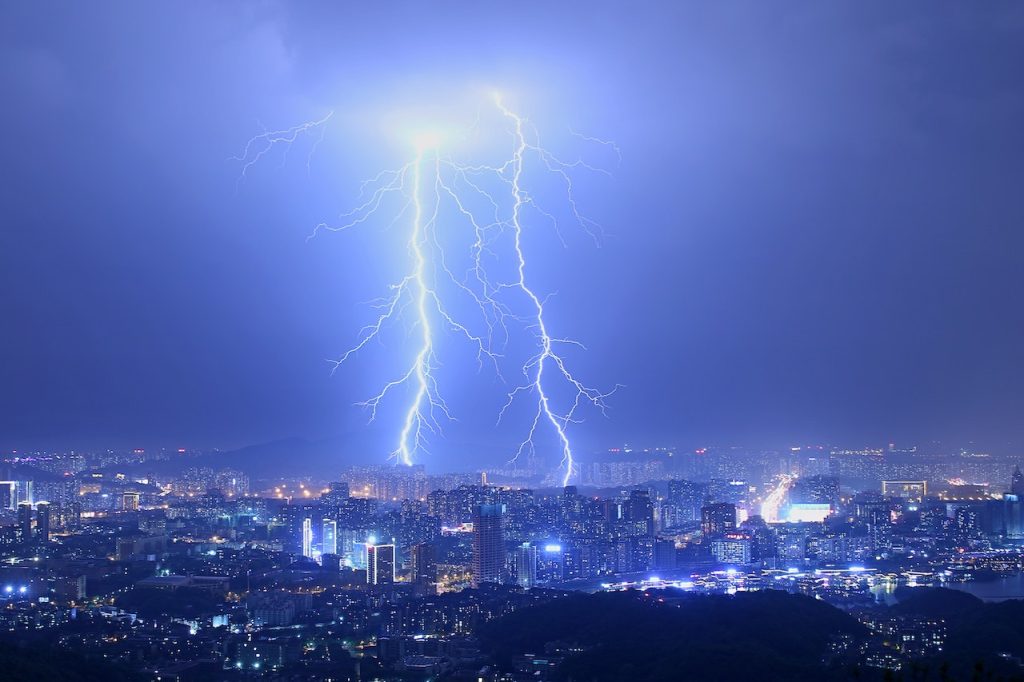
Picture this: you’ve been eagerly anticipating your move to a new home in the beautiful state of Virginia. You’ve packed your belongings, organized the logistics, and you’re ready to embark on this exciting journey. But as luck would have it, Mother Nature decides to throw a curveball your way.
The weather forecast predicts severe thunderstorm, rainy weather, snow, tornado, or strong winds on your moving day. Don’t fret! While moving in bad weather may seem daunting, with proper planning, a positive mindset, and a dash of resourcefulness, you can conquer any storm that comes your way.
Virginia, with its diverse climate, is known for its unpredictable weather patterns. From scorching summers to chilly winters and everything in between, the Old Dominion State has it all. As a result, moving during severe weather is a challenge many Virginians face. But fear not, we will arm you with invaluable tips to navigate the hurdles of moving in bad weather, ensuring a smooth transition to your new abode.
Table of Contents
Understanding Virginia's Weather: Navigating the State's Dynamic Climate

When it comes to weather, Virginia is a state of many faces. From the coastal plains to the Appalachian Mountains, the Commonwealth experiences a wide range of climate variations throughout its diverse regions. To successfully navigate moving in bad weather, it’s crucial to understand the weather patterns specific to Virginia.
Coastal Virginia, bordering the Chesapeake Bay and the Atlantic Ocean, is known for its milder winters and hotter, more humid summers. However, it is also prone to heavy rainfall, especially during hurricane season. The threat of tropical storms and hurricanes can bring torrential rains and strong winds, making moving a challenge.
Moving inland, Central Virginia experiences a more moderate climate with distinct four seasons. Summers are warm and humid, while winters can bring freezing temperatures and occasional snowfall. Spring and fall offer mild and pleasant weather, making them ideal seasons for moving.
Venturing into the western parts of the state, where the majestic Appalachian Mountains dominate the landscape, the climate becomes more mountainous. These regions experience cooler temperatures and higher precipitation levels, including snowfall during winter. Moving in mountainous areas requires extra caution, as roads can be icy and treacherous.
Whether you’re dealing with coastal storms, extreme temperatures, or mountainous terrain, knowledge is the key to overcoming any weather-related hurdle. So, before embarking on your moving journey, take the time to research Virginia’s weather patterns and consult reliable sources for up-to-date information.
Conquering the Storm: Essential Tips for Moving in Bad Weather in Virginia

Moving to a new home is an exciting adventure, but Mother Nature doesn’t always cooperate. Here are some invaluable tips for severe weather preparedness while moving to your new home.
1. Monitor the Weather Forecast:
Before you start packing those boxes, keep a keen eye on the weather forecast for your moving day. Virginia is known for its unpredictable weather patterns, so it’s essential to stay updated. Check reputable weather sources like NOAA weather radio or National weather service by Virginia department and be prepared for potential rain, snow, flash flooding, or strong winds. By knowing what to expect, you can make informed decisions and plan your emergency supplies accordingly.2. Communicate with Your Movers:
If you’ve hired professional movers, open lines of communication are crucial. Reach out to them a few days before the move to discuss the possibility of bad weather. A reliable moving company will have experience dealing with severe thunderstorms and will provide valuable advice on how to proceed. Together, you can create a contingency plan to address any potential setbacks.3. Protect Your Belongings:
Bad weather can pose a threat to your precious belongings. Ensure that your possessions are adequately protected by investing in high-quality packing supplies. Use sturdy cardboard boxes, plastic covers, and packing tape to shield your items from moisture and the elements. Additionally, consider using waterproof covers for furniture and appliances, ensuring they arrive at your new home unscathed.4. Clear Pathways and Parking Areas:
Before the moving day arrives, take the time to clear any pathways, driveways, and parking areas at both your current and new residences. Remove any debris, snow, or ice to prevent accidents and make it easier for the movers to load and unload your belongings. This small effort can save you valuable time and minimize the risk of injuries.5. Wrap and Protect Floors:
Moving in bad weather means that wet and muddy shoes can wreak havoc on your floors. Protect your old and new floors by using plastic or cardboard sheets. Lay them down in high-traffic areas, such as hallways and entrances, to prevent dirt, moisture, and scratches. This simple precaution will preserve the beauty of your new home and save you from unnecessary cleaning or repair costs.6. Pack an Essential Survival Kit:
Prepare a well-stocked survival kit to tackle any unforeseen circumstances during the move. Include items like flashlights, first aid supplies, snacks, bottled water, warm clothing, and blankets for winter weather. These essentials will come in handy if you encounter power outages, delays, or other unexpected events. Stay prepared, and your move will be less stressful, even in the face of challenging weather.7. Stay Positive and Flexible:
Moving in bad weather can be frustrating, but maintaining a positive attitude goes a long way. Embrace the challenges as part of the moving experience and focus on the exciting new chapter awaiting you. Flexibility is also key; be prepared for delays and adjust your plans accordingly. By adapting to the situation, you can tackle any obstacles that come your way.8. Be Mindful of Safety:
Your safety and the safety of the movers should always be a top priority. Exercise caution while loading and unloading items, especially in slippery conditions. Avoid rushing and take your time to ensure a safe and accident-free move. If conditions become too hazardous or you get severe thunderstorm warning, consider rescheduling with your moving company. Your well-being is worth the wait.Planning and Preparing for a Move in Bad Weather: Ensuring a Smooth Transition Despite Nature's Challenges

Moving is already a significant undertaking, but when you add bad weather into the mix, it can feel like an uphill battle. However, with careful planning and thorough preparation, you can conquer any weather-related obstacles and ensure a seamless transition to your new home.
The first step in planning for a move in severe weather is to create a detailed checklist. Start by setting a realistic timeline, allowing for extra time in case of weather-related delays. Consider potential weather scenarios like tornado warning, certain types of thunderstorms from occurring and devise backup plans accordingly. Have a contingency plan in place for rescheduling with your moving company or seeking alternative routes if road conditions become hazardous.
One crucial aspect of preparation is investing in high-quality packing supplies. Sturdy boxes, plastic covers, and packing tape will protect your belongings from moisture and the elements. Remember to pack essential items in waterproof containers or bags, ensuring they remain safe and dry throughout the move.
Clear communication with your moving company is vital. A reliable moving company will have experience navigating severe weather conditions and can provide valuable guidance. While it’s impossible to control the weather, you can take proactive steps to minimize its impact.
Another critical aspect of planning is keeping a close eye on the weather forecast leading up to your moving day. Stay informed about potential rain, severe thunderstorm, snow, or strong winds and adjust your plans accordingly.
Lastly, be prepared to exercise flexibility and adaptability on the moving day itself. Have a backup plan for delays or unexpected weather-related challenges.
ARE YOU MOVING SOON?
Safety Measures During the Move: Protecting Yourself and Your Belongings in Severe Weather Conditions
Moving in bad weather not only presents logistical challenges but also raises safety concerns. It’s crucial to prioritize safety to prevent accidents, injuries, and damage to your belongings. By taking the following safety measures, you can ensure a smooth and secure move, even in the face of severe weather conditions.
1. Dress Appropriately: When moving in bad weather, dress in layers and wear appropriate clothing and footwear. Opt for waterproof outerwear to shield yourself from rain or snow. Non-slip shoes with good traction are essential for navigating slippery surfaces. Don’t forget to wear gloves to protect your hands and maintain a firm grip on items.
2. Use Proper Lifting Techniques: Regardless of the weather, it’s important to use proper lifting techniques to avoid straining your back or causing injury. Bend at the knees, not the waist, and lift with your legs. If an item is too heavy, don’t hesitate to ask for help or use moving equipment like dollies or hand trucks.
3. Take Precautions on Slippery Surfaces: Rain, snow, or ice can create hazardous conditions. Exercise caution when walking on wet or icy surfaces. Clear pathways of snow and ice before the move and use salt or sand to increase traction. Take small, deliberate steps and walk slowly to maintain balance. Consider using grip-enhancing traction devices for added stability.
4. Secure Furniture and Boxes: In windy conditions, ensure that your furniture and boxes are properly secured to prevent them from being blown away or damaged. Use straps, bungee cords, or ropes to secure items on moving trucks or in your vehicle. Double-check that everything is tightly fastened before hitting the road.
5. Protect Floors and Surfaces: Protect the floors and surfaces in both your old and new homes to prevent slips and damage. Use furniture sliders or moving blankets to prevent furniture from scratching floors. Taking these precautions will not only protect your belongings but also minimize the risk of accidents.
6. Be Aware of Electrical Hazards due to Power Lines: If there is a possibility of rain during the move, exercise caution when handling electrical items. Keep electrical cords and appliances away from wet areas to avoid electrical shocks. Ensure that all electrical equipment is dry before use.
Benefits of Hiring Professional Movers for Bad Weather Moves: Why Expert Assistance Is Worth Every Penny

Moving in bad weather can be a daunting task, but it doesn’t mean you have to face it alone. Hiring professional movers to handle your relocation during severe weather conditions can make a world of difference. While it may require an investment, the benefits and peace of mind they provide are well worth every penny.
1. Experience and Expertise: Professional movers have extensive experience navigating all kinds of weather conditions. They are well-versed in handling the challenges posed by rain, snow, wind, and slippery surfaces. With their expertise for severe weather preparedness, they know the best techniques and precautions to take to ensure a safe and efficient move. Trusting the professionals means entrusting your belongings to capable hands.
2. Safety First: Your safety and the safety of your belongings should be top priorities during a move. Professional movers are trained to prioritize safety measures and are equipped with the necessary tools and equipment to handle adverse weather conditions. They have the expertise to assess risks and adapt their strategies accordingly.
3. Specialized Equipment: Moving in bad weather often requires specialized equipment to navigate challenging terrain or protect your belongings. Professional movers come prepared with the right tools, such as dollies, straps, and covers, to safely and efficiently transport your items.
4. Time and Efficiency: Bad weather can cause delays and disruptions during a move. Professional movers have the experience and resources to adapt quickly to changing circumstances. They can efficiently manage unforeseen challenges, ensuring your move stays on track despite the weather. By entrusting the logistics to experts, you save valuable time and can focus on other aspects of your move.
5. Insurance Coverage: Accidents can happen, even with the most careful planning. One of the significant advantages of hiring professional movers is the insurance coverage they provide. Insurance agent will offer flood insurance, protecting your belongings in case of any unforeseen damage or loss. This gives you peace of mind knowing that your items are protected during the move.
66Movers: Your Reliable Moving Partner in Virginia
When it comes to moving in Virginia, you need a trustworthy and dependable moving partner by your side. That’s where 66Movers comes in. With our exceptional services and commitment to customer satisfaction, we are the go-to choice for a stress-free and smooth relocation experience.
Firstly, our team of experienced professionals is well-versed in the unique challenges of moving in Virginia, including unpredictable weather conditions. We have the expertise to handle any obstacles that may arise, ensuring that your move goes seamlessly, rain or shine.
At 66Movers, we take pride in our top-notch customer service. From the moment you contact us, our friendly and knowledgeable staff will guide you through the entire moving process, answering all your questions and addressing any concerns you may have. We understand that every move is unique, and we tailor our services to meet your specific needs and preferences.
Another reason to choose 66Movers is our commitment to the safety of your belongings. We use the highest quality packing materials and techniques to ensure that your items are protected during transit, even in challenging weather conditions. With our attention to detail and meticulous handling, you can trust that your valuables will arrive at your new home in the same condition as when they left.
Furthermore, 66Movers offers a range of services to make your move as convenient as possible. From packing and unpacking to disassembly and reassembly of furniture, we handle all the heavy lifting so that you can focus on settling into your new home. Our fleet of well-maintained trucks and equipment ensures efficient transportation, regardless of the weather.
We provide transparent and upfront pricing, so you can plan your budget with confidence. Our commitment to fair pricing and exceptional value makes us the logical choice for your moving needs in Virginia. Contact us today to get started on your move and discover why we are the preferred choice for residents of Virginia.
Conclusion
Moving in bad weather may present some unique challenges, but with the right preparation and mindset, you can successfully navigate through them. By monitoring the weather forecast, communicating with your movers, protecting your belongings, and following the tips mentioned above, you’ll be well-equipped to conquer any storm that comes your way. Remember, staying positive, flexible, and safety-conscious is the key to a successful move, regardless of the weather conditions.
The benefits of hiring professional movers for bad weather moves are undeniable. Their experience, expertise, specialized equipment, safety measures, insurance coverage, and ability to navigate challenges efficiently make them invaluable partners during the relocation process. The investment you make in their services is an investment in peace of mind, time savings, and the well-being of yourself and your belongings. So, embrace the assistance of professionals and embark on your move with confidence, knowing that you have expert help to overcome any weather-related obstacles that come your way.
FAQs
To protect your belongings during a move in bad weather, use plastic covers or tarps to shield them from rain or snow. Additionally, secure items in waterproof containers or boxes, and consider using padding to prevent damage caused by shifting due to slippery conditions.
When moving in extreme heat or humidity, stay hydrated and take frequent breaks to avoid heat exhaustion. Protect yourself and your belongings from direct sunlight by using shade or covering items with blankets.
During severe weather conditions, prioritize safety by rescheduling the move if possible. If rescheduling is not an option, communicate with your movers to assess the situation and take appropriate precautions, such as securing items to prevent them from being blown away and avoiding outdoor activities during the peak of the storm.